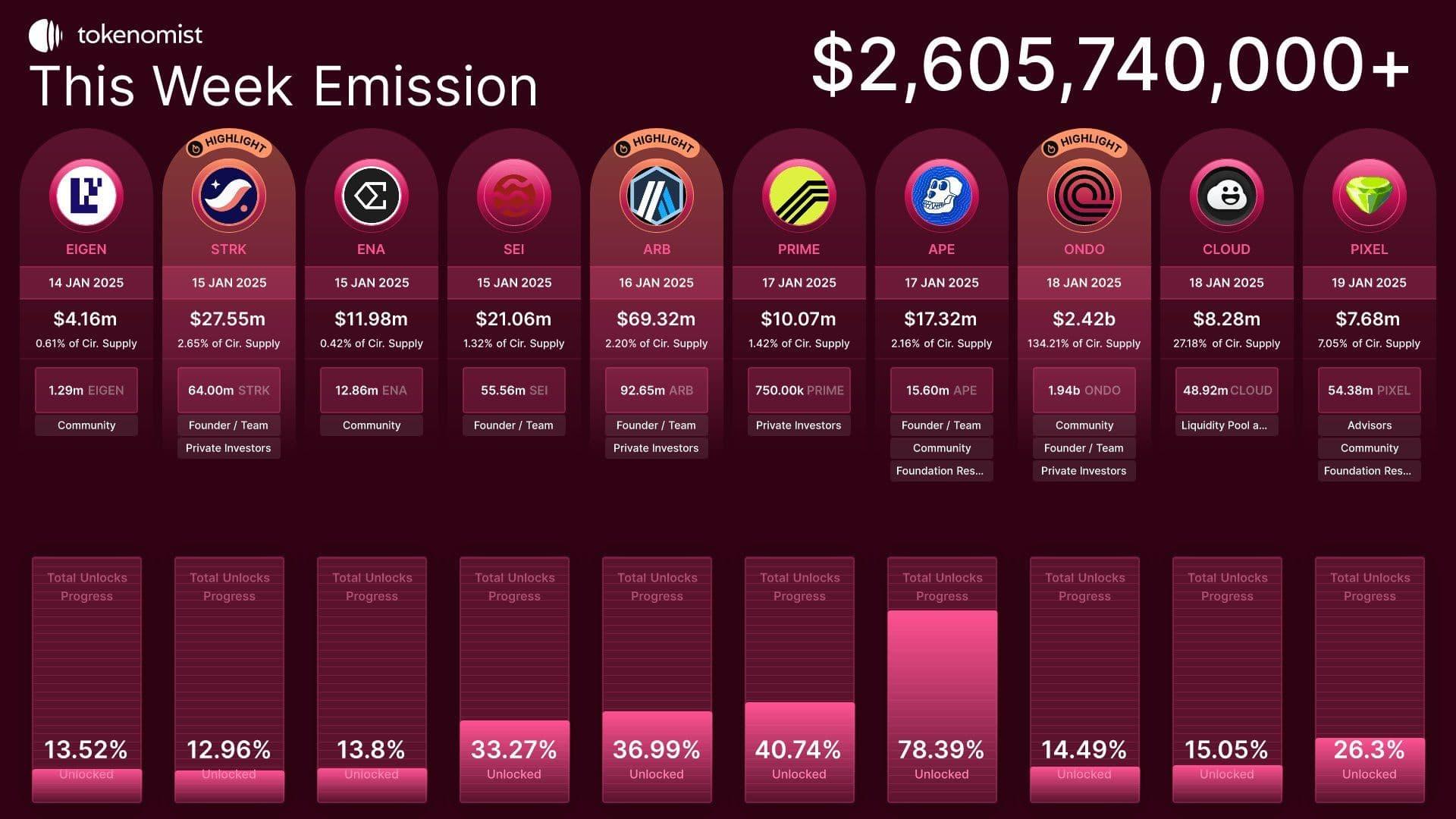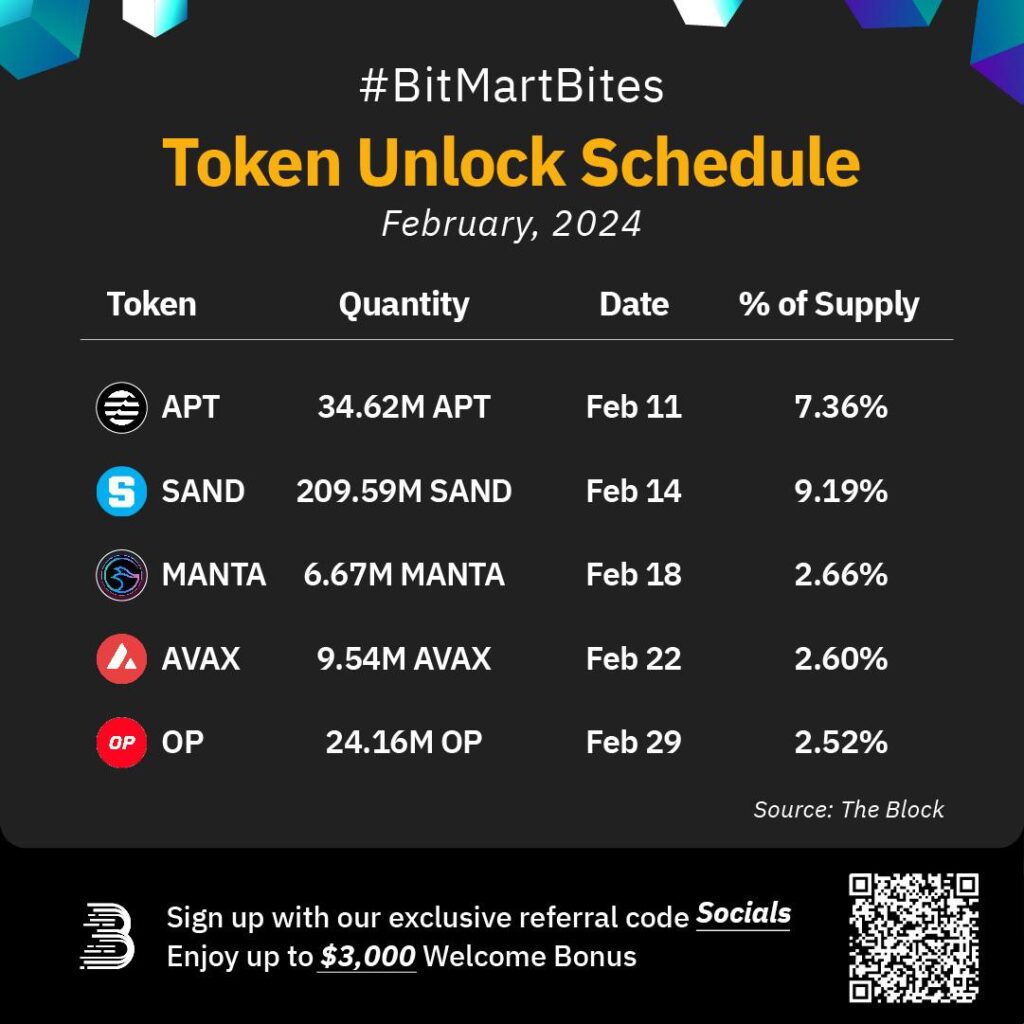In the intricate world of cryptocurrency, where digital assets often dance to the rhythm of market sentiment and speculation, one factor quietly wields significant influence over price movements: token unlock schedules. These predetermined timelines dictate when locked tokens become available for trading, subtly shaping supply dynamics and investor behavior. Understanding how token unlock schedules operate and their ripple effects on price action is crucial for anyone navigating the volatile seas of crypto markets. This article delves into the mechanics behind token unlocks, exploring their impact on price fluctuations and what they mean for traders and investors alike.
Table of Contents
- Understanding Token Unlock Schedules and Their Role in Market Dynamics
- Analyzing the Timing and Volume of Token Releases for Price Stability
- The Psychological Effects of Unlock Events on Investor Behavior
- Strategies for Mitigating Volatility Around Unlock Dates
- Best Practices for Investors Navigating Token Unlock Periods
- Frequently Asked Questions
- Future Outlook
Understanding Token Unlock Schedules and Their Role in Market Dynamics
Token unlock schedules are a fundamental mechanism in the crypto ecosystem, dictating when and how locked tokens become available for trading or transfer. These schedules are often implemented to control supply inflation, incentivize long-term holding, and align stakeholder interests. However, the timing and volume of token releases can significantly influence market sentiment and price volatility. Understanding these schedules is crucial for investors aiming to anticipate potential price movements and strategize their entries or exits accordingly.
Key elements of token unlock schedules include:
- Cliff period: A lock-up phase during which no tokens are released, often used to prevent early dumping.
- Linear release: Tokens gradually unlock over a fixed period, smoothing market supply shocks.
- Milestone-based unlocks: Tokens are released upon achieving specific project goals or timelines.
Market dynamics are highly sensitive to the timing and size of token unlocks. Large unlock events can flood the market, causing price dips due to increased selling pressure. Conversely, well-structured schedules that distribute tokens in smaller, predictable batches can help maintain price stability and investor confidence. Traders often monitor token unlock calendars closely, using them alongside volume and sentiment indicators to forecast short-term price action.
| Unlock Type | Impact on Market | Investor Strategy |
|---|---|---|
| Cliff Unlock | Sudden supply surge, potential price dip | Prepare for volatility, consider partial sell-off |
| Linear Release | Gradual supply increase, stable price action | Hold or accumulate steadily |
| Milestone Unlock | Price reacts to project progress and unlock | Monitor project updates closely |
Analyzing the Timing and Volume of Token Releases for Price Stability
The release schedule of tokens plays a pivotal role in shaping market dynamics. When large quantities of tokens flood the market abruptly, it often triggers volatility, unsettling investors and causing sharp price fluctuations. Conversely, a well-paced and strategically timed token release can help maintain equilibrium, fostering investor confidence and promoting a more stable trading environment.
Volume is equally crucial. Even a smaller number of tokens released at the wrong moment can create disproportionate pressure on price if market demand isn’t aligned. Understanding the delicate balance between token supply injection and market absorption capacity is key to anticipating potential price movements and avoiding disruptive sell-offs.
- Gradual unlocking: Spreads out supply, reducing price shocks.
- Cliff releases: Sudden token availability can cause abrupt price dips.
- Market conditions: Timing releases during bullish phases can soften negative impacts.
- Investor behavior: Anticipation of unlocks can lead to pre-emptive market moves.
| Unlock Type | Impact on Price | Typical Volume Range |
|---|---|---|
| Linear Release | Minimal volatility | 5-10% monthly |
| Cliff Unlock | Potential sharp dips | 20-30% at once |
| Hybrid Models | Balanced price impact | Varies by project |
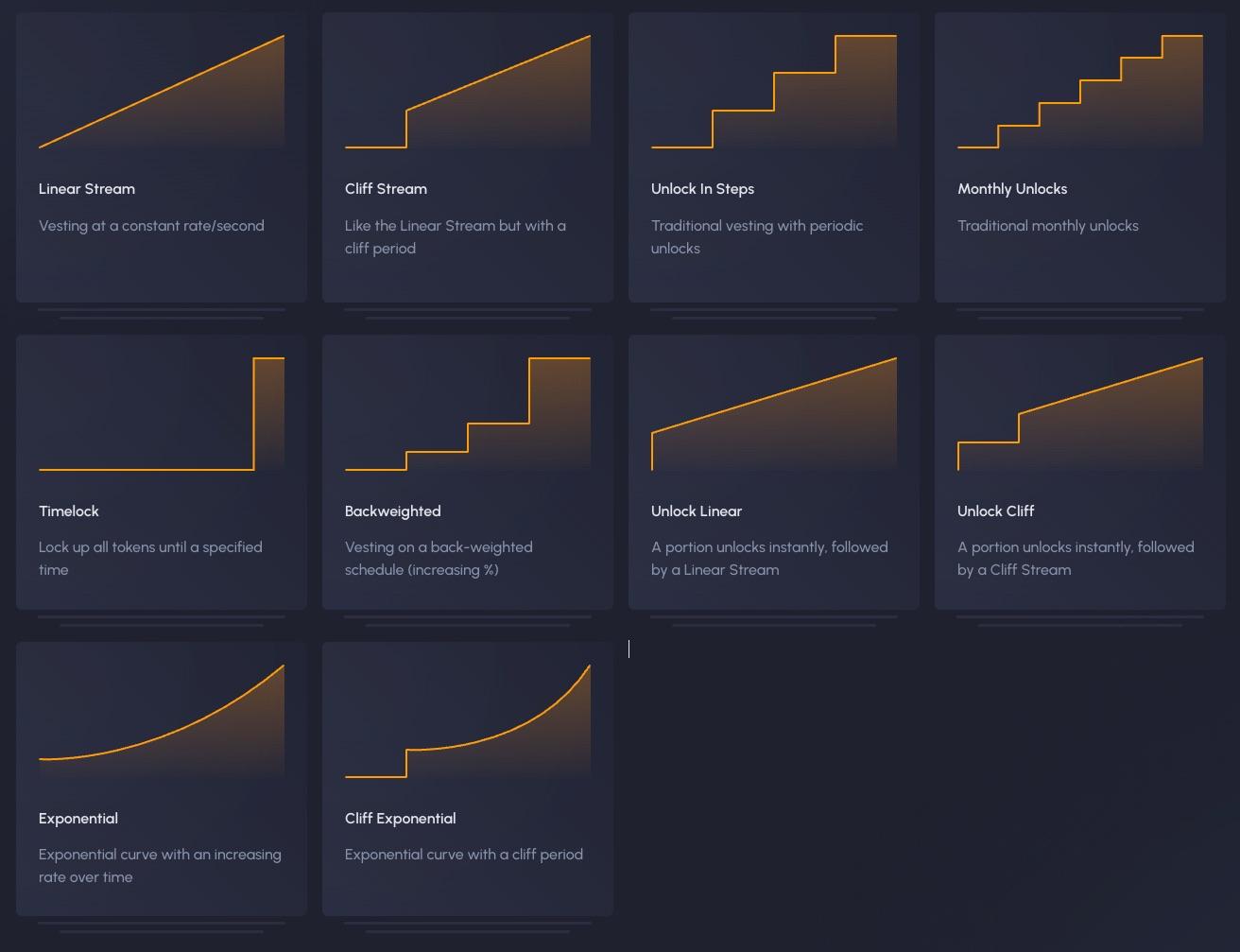
The Psychological Effects of Unlock Events on Investor Behavior
Unlock events often serve as psychological triggers that ripple through the investor community, stirring a complex blend of anticipation and anxiety. The looming release of tokens can instill a sense of urgency, prompting holders to reassess their positions. This phenomenon is fueled by the fear of dilution, as investors worry that an influx of newly unlocked tokens might flood the market, leading to downward price pressure.
Market sentiment during these periods tends to oscillate between cautious optimism and defensive skepticism. Some investors interpret the unlock as a sign of project maturity and upcoming utility, encouraging accumulation. Others brace for a sell-off, choosing to liquidate early to avoid losses. This duality often results in increased volatility, not solely driven by fundamental changes but by collective psychology.
- Herd behavior: Investors may mimic the actions of perceived market leaders, amplifying price swings.
- Anchoring bias: Past token prices before unlocks heavily influence expectations and decision-making.
- Overreaction: Emotional responses can cause exaggerated price movements, both up and down.
| Psychological Effect | Typical Investor Reaction | Price Impact |
|---|---|---|
| Fear of dilution | Sell tokens early | Downward pressure |
| Optimism for growth | Buy or hold tokens | Upward momentum |
| Herd mentality | Follow market trend | Exaggerated volatility |
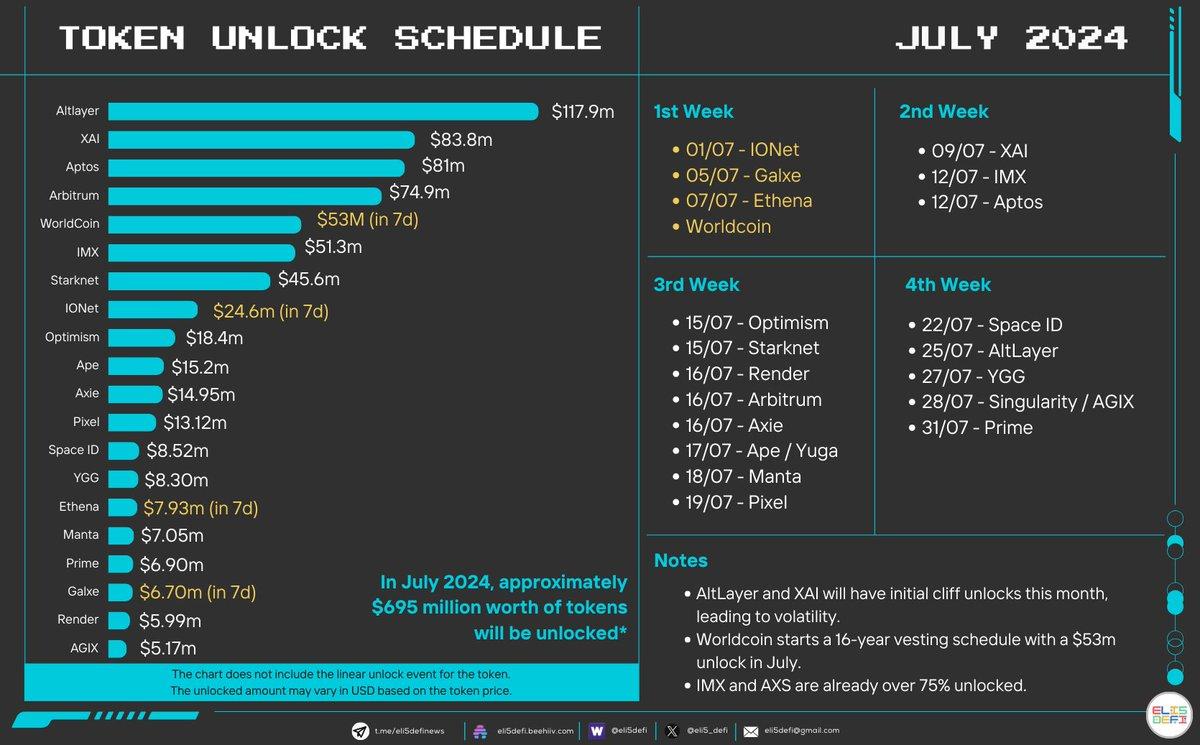
Strategies for Mitigating Volatility Around Unlock Dates
Volatility surrounding token unlock dates can unsettle even the most seasoned investors. To navigate this turbulent phase, adopting a proactive approach is essential. One effective method is to diversify investment timing. Rather than concentrating purchases or sales around a single unlock event, spreading transactions over multiple periods can reduce exposure to sudden price swings.
Another key strategy involves monitoring on-chain data and social sentiment closely. By leveraging analytics tools to track wallet movements and trending discussions, investors can anticipate market reactions before they fully materialize. This foresight allows for timely adjustments, whether it’s scaling back positions or preparing to capitalize on dips.
- Implement stop-loss orders to safeguard against sharp declines
- Engage in dollar-cost averaging to smooth entry points
- Stay informed about project-specific unlock schedules and team announcements
| Strategy | Benefit | Example |
|---|---|---|
| Diversify Timing | Minimizes impact of sudden sell-offs | Stagger sales over weeks |
| On-Chain Monitoring | Early detection of large holder activity | Track whale wallet transactions |
| Stop-Loss Orders | Limits downside risk during sharp drops | Set stop-loss 10% below purchase price |
Ultimately, understanding the psychology behind unlock-induced volatility empowers investors to maintain composure and make rational decisions. By blending data-driven insights with disciplined risk management, it’s possible to transform these periods from threats into opportunities for strategic growth.
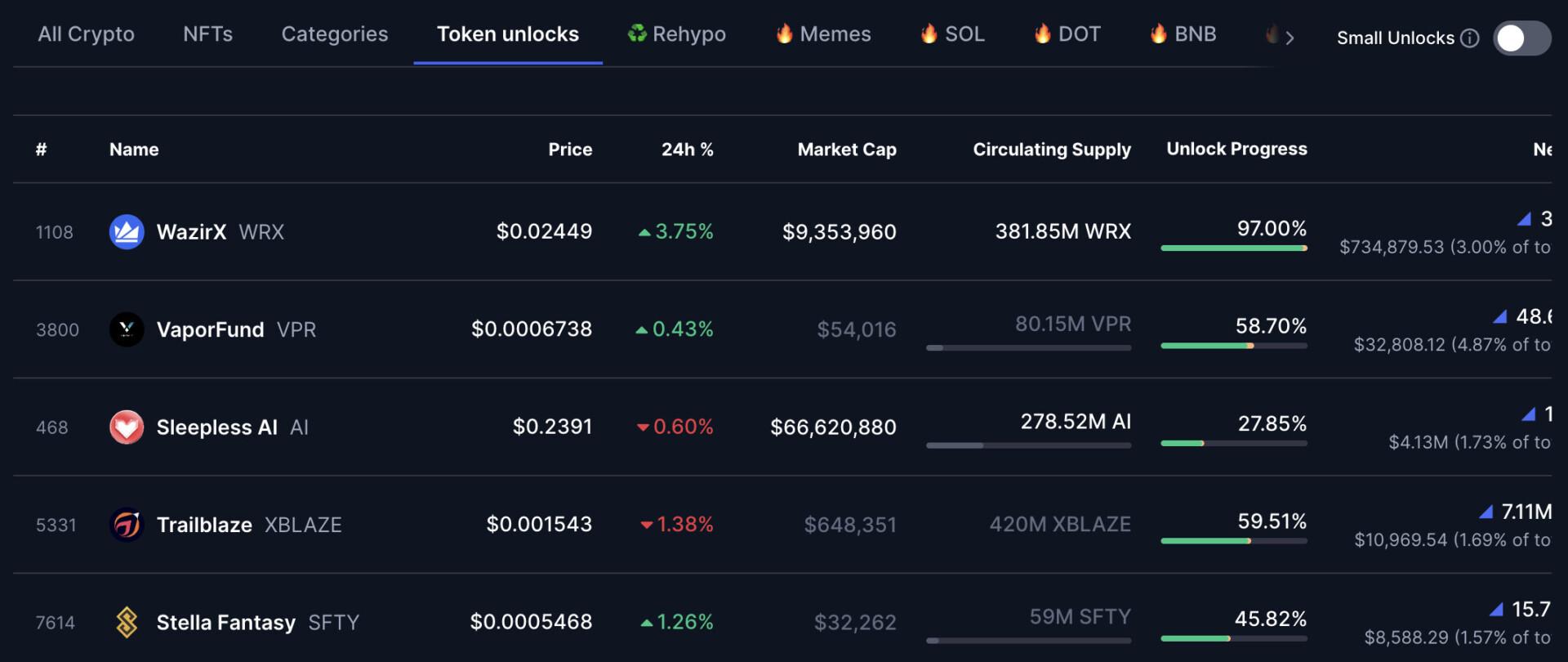
Best Practices for Investors Navigating Token Unlock Periods
Investors should approach token unlock periods with a blend of caution and strategic foresight. One key approach is to monitor the unlock schedule closely-knowing when large tranches of tokens become liquid can provide insight into potential market pressure. This awareness enables investors to anticipate volatility spikes and adjust their portfolios accordingly.
Another crucial tactic is to diversify holdings to mitigate risk. Relying heavily on tokens with imminent unlocks can expose your investments to abrupt price swings. Balancing your portfolio with assets that have stable or distant unlock timelines helps cushion potential downturns triggered by mass token sales.
Staying informed about the project’s fundamentals and lock-up terms can also guide decision-making. Sometimes, tokens released during unlock periods are subject to vesting cliffs or gradual release mechanisms that reduce immediate sell pressure. Understanding these nuances allows investors to differentiate between short-term noise and meaningful market trends.
- Use alerts or calendar reminders for key unlock dates.
- Analyze historical price movements around past unlocks.
- Consider staking or locking tokens to reduce selling temptation.
- Engage with community insights and official announcements.
Frequently Asked Questions
Q&A: Token Unlock Schedules – How They Impact Price Action
Q1: What exactly is a token unlock schedule?
A token unlock schedule is a predetermined timeline that dictates when locked cryptocurrency tokens become available for trading or transfer. These schedules are often set by the project team to gradually release tokens to investors, team members, or advisors, preventing large dumps that could destabilize the token’s market.
Q2: Why do projects implement token lockups in the first place?
Lockups serve multiple purposes: they build investor confidence by showing commitment from insiders, reduce immediate selling pressure after a token launch, and help maintain a more stable price over time. By staggering releases, projects aim to avoid sudden floods of tokens hitting the market.
Q3: How do token unlock events typically affect price action?
Token unlocks can lead to increased selling pressure as holders gain liquidity and may choose to take profits. This often results in short-term price dips or heightened volatility. However, if unlocks are anticipated and well-communicated, markets may price in these events ahead of time, softening the impact.
Q4: Are all token unlock schedules the same?
No, they vary widely. Some projects opt for linear unlocks, releasing tokens steadily over months or years, while others use cliff unlocks, where a large portion becomes available all at once after a set period. The structure significantly influences market reactions.
Q5: Can token unlock schedules ever have a positive impact on price?
Yes. Transparent and gradual unlocks can foster long-term investor trust and encourage participation by reducing fears of sudden sell-offs. Additionally, as tokens become liquid, increased trading activity can boost market interest and potentially support price growth.
Q6: How should investors approach tokens with upcoming unlock events?
Investors should research the unlock schedule thoroughly and consider how much supply might enter the market. It’s wise to anticipate volatility around these dates and avoid panic selling. Understanding the project’s fundamentals and lockup rationale helps in making informed decisions.
Q7: Do all tokens react negatively to unlocks?
Not necessarily. If the market perceives the token’s value as strong and demand high, unlocks might have muted or even positive effects. Sometimes, unlocked tokens enable holders to stake, vote, or use the tokens productively, which can support price stability.
Q8: How can projects better manage token unlock impacts?
Clear communication is key. Projects that provide detailed unlock schedules, rationale, and ongoing updates help set market expectations. Some also implement mechanisms like vesting, buybacks, or incentives to encourage holding rather than immediate selling.
Q9: Is it possible to predict price movements based on unlock schedules alone?
While unlock schedules are an important factor, price action also depends on broader market conditions, project developments, and investor sentiment. Unlocks may trigger volatility, but they are just one piece of the puzzle.
Q10: In summary, why should token unlock schedules matter to crypto participants?
Because they directly influence token supply dynamics and market psychology. Understanding unlock schedules equips investors and traders to better anticipate periods of volatility, make strategic decisions, and engage more confidently in the crypto ecosystem.
Future Outlook
As the blockchain landscape continues to evolve, understanding token unlock schedules becomes ever more essential for investors and enthusiasts alike. These carefully timed releases aren’t just administrative footnotes-they are dynamic forces that ripple through markets, influencing sentiment, liquidity, and ultimately, price action. By demystifying how and when tokens enter circulation, we equip ourselves with a clearer lens to anticipate market movements and make informed decisions. In the intricate dance of supply and demand, timing is everything, and token unlock schedules are the choreographers shaping the rhythm of crypto’s ever-changing price story.